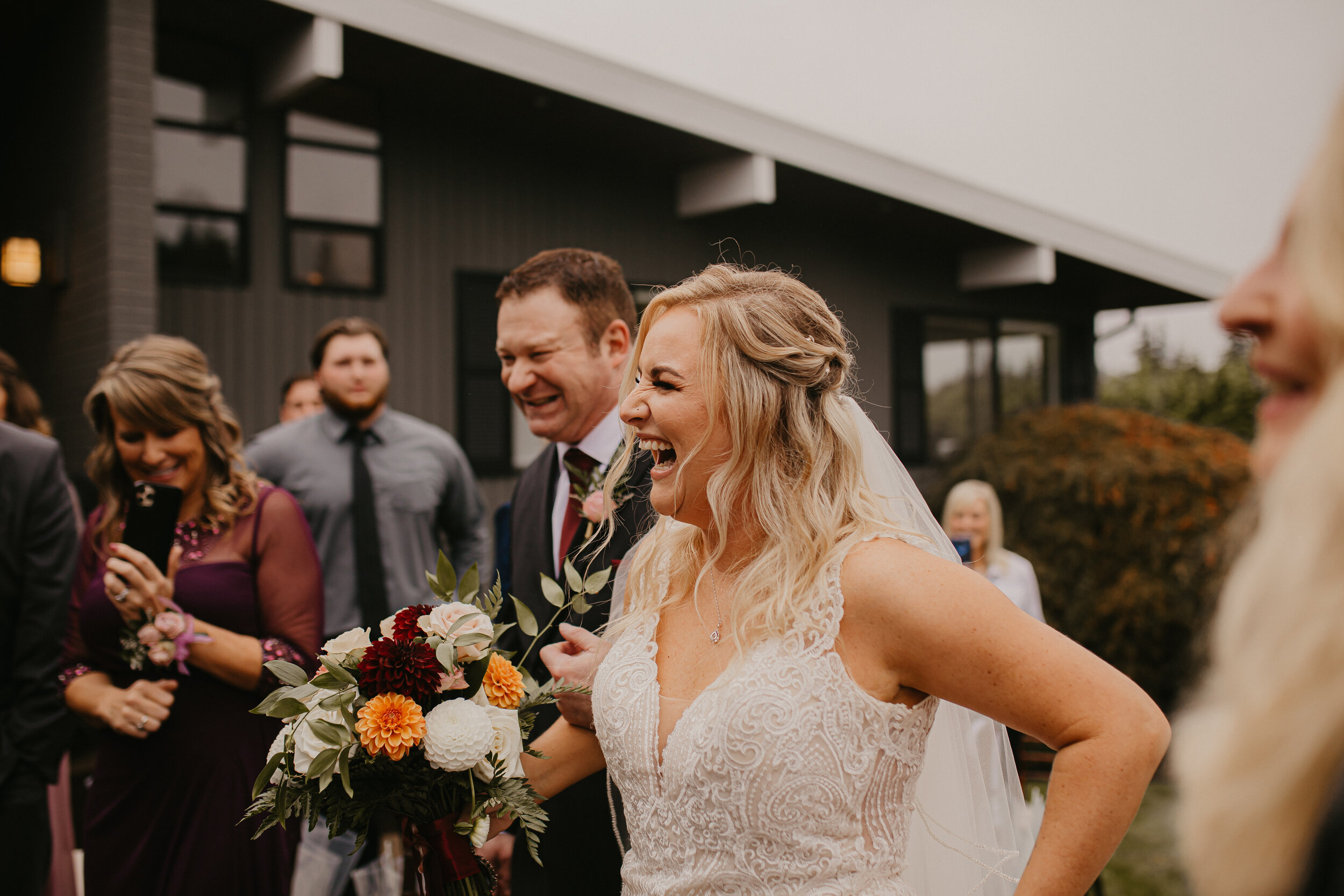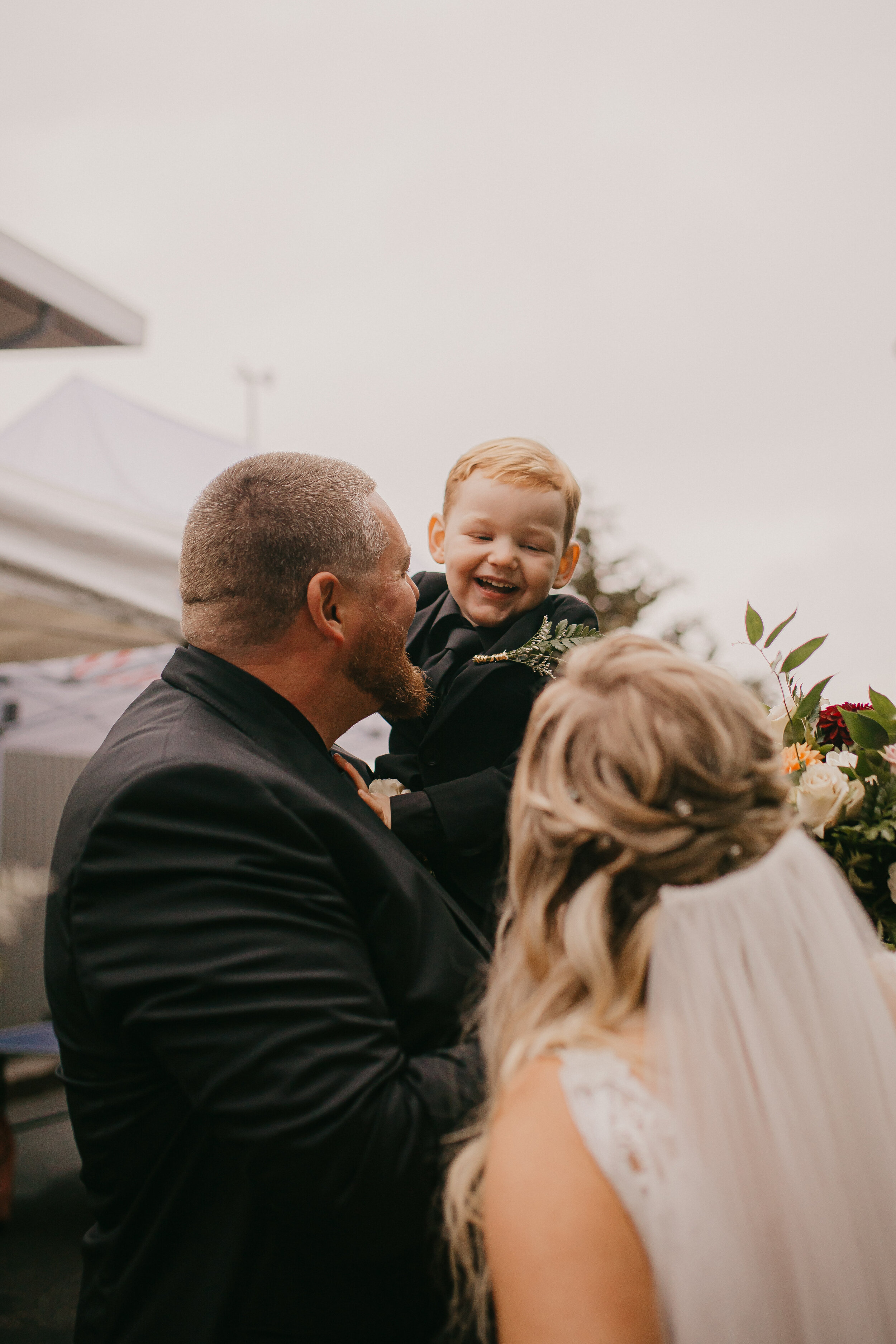Wedding Advice: Budgeting as a Team
Weddings are a fantastic opportunity to practice managing a budget as a couple. You and your partner are creating a family and likely co-managing a household budget as a result. If you haven’t discussed how you’ll manage your family budget, a wedding is a great opportunity to begin that discussion. It’s an opportunity to practice budget management in alignment with how you plan to manage your family finances. Think of it as a “beta” for the real deal. If you have already put in place financial management practices in your relationship, a wedding is a great opportunity to pivot or evolve those practices in any way you choose, including reconfiguring how things are paid for, communicated about, or allocated.
Choosing not to communicate about the finances of a wedding can lead to friction in a marriage. Much of the time this is because your partnership no longer feels like a joint effort. Let me explain: when your pool of resources is being spent in ways that one or the other does not consent to or is not consulted about, resentment can unfold and confusion about your joint goals can set in. If you want the wedding planning experience to be about building a life together, co-managing your wedding day budget is a necessary conversation to bring into your relationship.
We encourage you to use this opportunity to develop those skills together. No matter whether one partner comes in with more or less experience with financial management, or you’re starting in relatively the same position, this process is new because it is the first time you are participating in it together. Be open and curious and you will begin to build your family budgeting practices as a team, no matter the experience you bring.
To get you started, we are offering a few tips and tricks for budgeting for your wedding so that you can hit the ground running. The first list is our advice for establishing a family budgeting practice that will build skills for managing your wedding and your household. The second list is full of some of the key categories couples overlook when establishing their wedding budget; the little things outside of major vendor hires that can add up quickly and catch you by surprise. We hope you find both of these useful when sitting down to outline the first draft of your wedding budget together.
ESTABLISHING A FAMILY BUDGET.
Starting a family budgeting practice is no small undertaking. You and your partner have to come to the table with honesty and good intention. While you are creating your budgeting practice, be open to each other’s experiences. Listen for what your partner needs to be successful and ask for what you need to be supported. Be willing to revise and adapt the plan as you learn together. And don’t be afraid to have long conversations about the stuff that matters. With that in mind, here are some recommendations we’ve found helpful for establishing a family budgeting practice and practicing on your wedding.
Set a date.
When first building your budgeting practice you might want to meet bi-weekly, depending on when your paychecks come in. Put it in your calendars. Make it recurring. And keep it. It’s important to establish regularity and routine in reviewing your budget together. We recommend meeting monthly to review your expenses so that you have a consistent, predictable opportunity to look over what you’ve agreed to, what’s ahead, what’s surprising, and how you’re going to navigate forward together. Additionally, review recurring expenses you might have, even things you might not think of as expenses, for example, birthdays or your quarterly hair cut/color. These may seem incidental, but when you have the money already set aside for them, you’ll feel much more in control and less panicked about having to draw money from savings. Establish how you want to set things up at the first few meetings, and then re-evaluate how that is working two to three months. Remember that this is YOUR budget. No one else’s.
Try to leave your financial discussions in your meeting.
Avoid letting topics bleed out into the other ways you spend your time together. It’s best to establish and uphold the expectation of when you will tackle important topics together so that both partners feel prepared and present. Taking each other by surprise with deep conversations at the wrong time is a recipe for tension and closing off to further conversation in the short-term.
Work from a shared doc or app.
This is probably one of the larger hurdles in getting started. Doing “the work” of setting up an Excel document, downloading and syncing an app, and putting together categories seems to be the first wave where couples get stopped. Persevere. You can do this! Once you get the budget set up, all you have to do is plug in the numbers, categorize, and review once a month. If you feel a little numb in relationship to your spending (e.g. I know how much comes in, roughly what goes out, and that I’m “okay” at the end of each month), then using an Excel document in place of an app is a great way to get grounded in what your cash flow really looks like. The same goes for your wedding; if you know the generalities of your budget but feel stopped when it comes to breaking it down into categories, using a shared table is a great way to make your game plan more concrete and take it out of the unclear space of your head. Make a date out of setting it up together over a charcuterie board or vino. If you don’t know how much to assign to a category, don’t let it stop you. Take your best guess together and refine it the following month. It’s okay to be incorrect when you first get started. The important thing is to not get stopped at the beginning.
Know that it is okay to disagree + have discussion.
Again: it’s okay to disagree. In fact, sometimes it can be more productive because it makes you take a closer look at your assumptions. So, if you disagree on something, like how much to budget for a particular category, invite that disagreement in with kindness and curiosity. Make sure that you listen to your partner’s point of view with the intent to understand, rather than waiting to respond. If at the end of the discussion there is still a difference of opinion, put a pin in it the first time around. Go out into the world and do more research. Bring your findings back to your next meeting together and share your updates. If after the second time around you still carry a difference of opinion, reach a compromise. Whether it means adding to one category by reappointing resources from another, or finding a middle ground and being willing to revisit the results later, set the terms of your compromise so that they’re clear and actionable. The worst is a compromise that leaves everyone feeling stuck and unhappy about their efforts. At the end of the day, remind yourself that your budget is a living document that can change depending on your circumstances.
Leave wiggle room — for safety, freedom, + fun.
Remaining open and flexible is such an important part of financial management as a team. There are a million ways to skin a cat and, even though that turn of phrase is real gross, it gets the point across. There are many ways to approach spending money, investing in what you value, and saving for what matters. If you approach this part of your partnership as a learning experience where you get to construct your future together, then you will bring the right energy to the work. Stay disciplined where it matters -- namely, in the regularity of your meetings, your categorization methods, and your intentions behind each conversation -- and you will feel confident when you make purchases and investments that layer fun into the vision.
THE LITTLE WEDDING THINGS THAT ADD UP.
If you want to track the real cost of your wedding, then make sure you account for all the little things that you purchase in the year leading up to it. Yes, that means shoes and socks and dry cleaning if you’re being diligent about it. Consider all the purchases tied to a wedding that you wouldn’t be making otherwise. To help you get started, here is a list of the little things that are often overlooked.
Accessories + Apparel
Wedding bands
Getting ready shirt
Dress
Tux, socks, shirt
Wedding night or Going away outfit
Shoes
Outfit preservation or Dry cleaning
Alterations
Headpiece, veil, or hat
Jewelry
Undergarments
Miscellaneous Details
Makeup, nails, and hair
Marriage license
Permits
Insurance [link to insurance article]
Wedding band engraving
Photo albums or prints
Tipping your vendors
Photos courtesy of Kailee Elizabeth Photography.
We believe in these budgeting tools and practices so thoroughly that we made them a part of our Tapestry Planning Portal. Our portal budget includes the ability to categorize expenses, assign them to a person or group, track payment progress, store due dates, and save links for online payment methods. While we won’t do the budgeting for you, we are happy to empower you to work together to make sure we are all checking on the numbers and being respectful of your boundaries. If this is the type of planner-vibe you’re looking for, definitely hit the button below to schedule your consultation.
— Kate, Tapestry Creative Director






